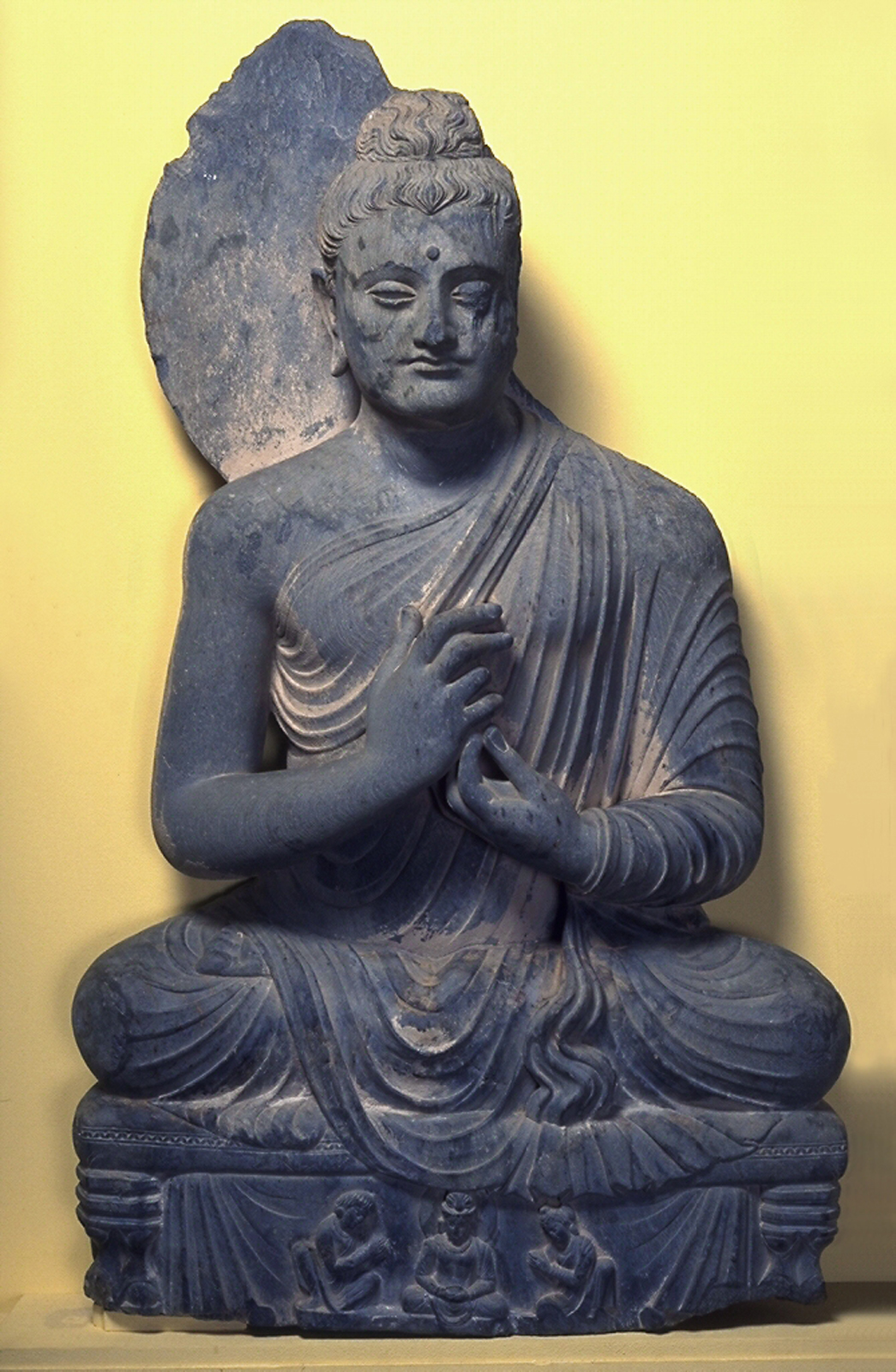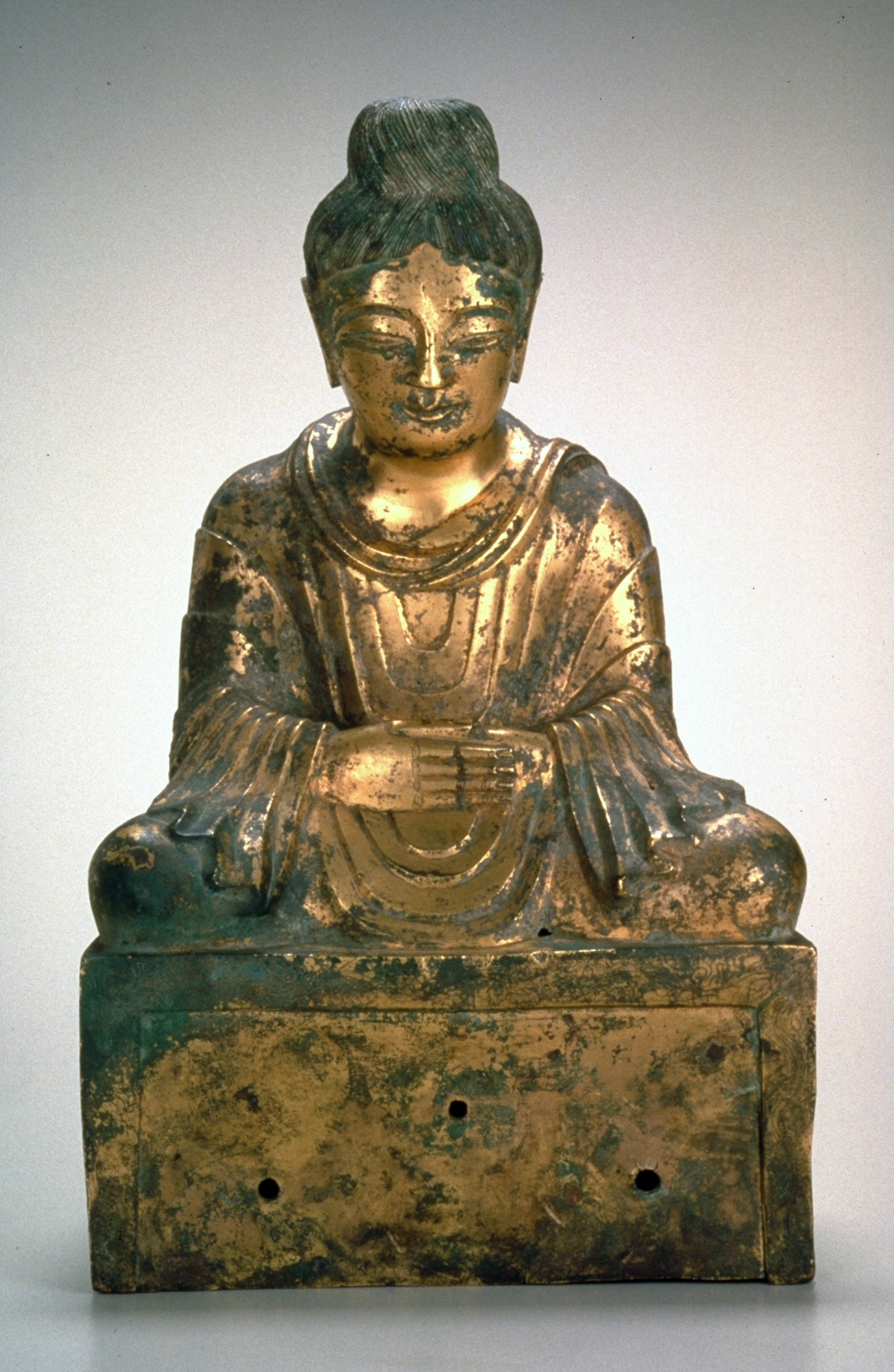Activity
The Spread of Buddhism Across Asia
Objective: To understand, through the analysis of artifacts and maps, how Buddhism changed as it spread across Asia and came to reflect the countries that embraced it.
Author: Willow Horne, UCBHSSP.

Seated Buddhas
Materials
Artifacts from the Asian Art Museum
Buddhist Artifacts from the Asian Art Museum of San Francisco (IMAGE.ONLY)
Buddhist Artifacts.PPT
Maps
Maps of Silk Road trade routes
Map of Buddhism’s Spread throughout Asia
Supplies
- Post-its and pencils for gallery walk
- 5 different colored pieces of construction paper, each one displaying the name of one of the following countries: India, Japan, Korea, China, Pakistan
- Laptop and projector to project Silk Road maps (or can be made into transparencies)
- Handouts (Maps and Handout: “Looking More Closely at the Artifacts”)
Procedure
Task 1: Gallery Walk of Buddhist Artifacts to gather first impressions
Link to Sources: Buddhist Artifacts (IMAGE.ONLY)
- Individual: Look at all of the images and write a post-it note with an observation, a question or a detail on each one. After everyone’s submitted their post-its, have the whole class quietly do another gallery walk in which they read each other’s observations/questions.
- Whole Class/Group Discussion:
- What did most people notice or wonder about these artifacts? (What are the general threads in the post-its?)
- Do you think all of these artifacts came from the same place? Why or why not?
- What can you glean about the belief system that contributed to these artifacts? (What is important in this belief system; what are the values it promotes?)
Task 2: Analyze Maps to Create General Timeline of Buddhism’s Spread
Part A. Maps of Silk Road Trade Routes (to be projected on screen)
http://www.silkroutes.net/orient/mapssilkroutestrade.htm
Whole Class together: Have volunteers read out loud the captions for each of the maps provided to gain a general understanding of the Silk Road’s purpose and reach. Note when the Silk Road was established. Have new volunteers name the various countries it connected.
Part B. Map of Buddhism’s Spread (should print out and give each group a copy)
http://www2.kenyon.edu/Depts/Religion/Fac/Adler/Reln260/Images260/Buddhism-spread.jpg
- Small Groups: In small groups, decipher the given map to figure out the general order in which Asian countries were exposed to Buddhism. Which were the first countries in Asia to be exposed to Buddhism after its origin in India? Which were the last?
- Whole Class/Large Group Discussion: Using tape or magnets, the teacher places the 5 labelled pieces of construction paper on the board in a random fashion. Have the class discuss/debate the order these should be placed in to show the general chronology of Buddhism’s spread. Once the order is established, the teacher can use these discussion prompts:
- Where do you see overlap or connections between the information you gleaned from the Silk Road maps and the information gleaned on the Spread of Buddhism map? (If the teachers has transparencies of a Silk Road Map and the Spread of Buddhism Map, it might be fun to place them both on the projector to see the overlap of routes.)
- What role could the Silk Road have played in the spread of Buddhism?
- Hypothesize: Thinking back to your general impressions of the artifacts in the Gallery Walk, how might the depiction of the Buddha have changed as Buddhism spread to other countries and became more established?
Task 3: Comparing/Contrasting Artifacts
Sources: Buddhist Artifacts.PPT (IMAGE & NOTES)
- Students do the gallery walk again, but with each artifact labelled so they know which country it comes from, as well as other details about its creation. As they peruse the images, students use the “Looking More Closely at the Artifacts” handout to take detailed notes on each artifact. Some questions the teacher can pose to help them focus:
- What is the figure wearing? What is the figure doing? How is the body positioned? What is the facial expression? Does anything surround the main figure; if so, what? What is the figure made of?
- Once students complete the front side of the handout, they should go on to the back side of the handout to complete the compare/contrast diagram.
- Small Group Discussion: Students share what they noted in their charts and diagrams. What are the major similarities and differences between the artifacts? What distinguishes each country’s depiction of the Buddha from the others? What do these distinctions reveal about what each country wants to convey or emphasize about the Buddha?
- If the teacher wants to bring everyone back together as a large group: Rearrange the construction paper labels for each country on the board in the same positions as in the compare/contrast diagram and have a share out; each group shares their ideas for a certain part of the diagram; teacher records responses on the board.
Or, the class could play “Detective”—
Compare this image of a Buddha from Thailand to the images you’ve already studied from other countries. Find Thailand on one of the maps we’ve already looked at today. Given its location as well as this depiction of the Buddha, where do you think Thailand fits into the Timeline of Countries that you created earlier in the lesson? (Note for Teacher: Buddhism spread to Thailand in the 3rd century B.C.E.)
Writing Prompt
(if extra time, or can be for homework)
Reflect: As Buddhism spread across Asia, what stayed consistent in different countries’ approach to the Buddha, and what changed to reflect a country’s unique culture?
Write an explanatory paragraph in response to the prompt. Include at least three specific pieces of evidence from the artifacts you examined to support your answer.







